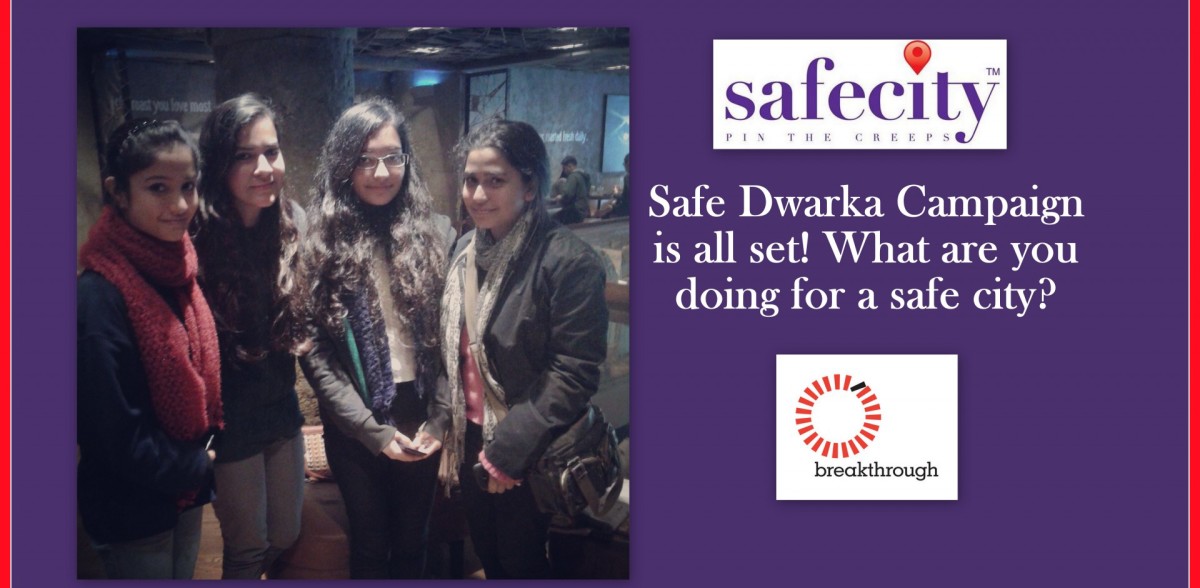Safecity Dwarka Campaign

Why we did the campaign?
A team of 7 students studying law at IP University shaped this campaign during their usual cafeteria sessions. A series of discussions, personal stories and experiences, and a combined passion resonated by all for Safe Dwarka triggered the need for a campaign, for something to go beyond their law books and for them to organize for change. It is the worrisome state of safety in Dwarka experienced by all genders alike that motivated them to devote time and resources to this project.
How we did it?
The campaign aimed at documenting and recording incidents of sexual violence in public spaces of Dwarka, you can read these personal stories here. This was carried out by the core campaign team who further engaged volunteers from their University after a series of training and development and was done by-
- Direct engagement with the student community who shared their personal experiences of sexual harassment in public spaces on the Safecity reporting platform. The core team of 5 members created individual teams who divided the work among themselves, reflecting the core at which Safecity campaigns functioning in encouraging leadership to address issues that affect them. The teams captured information in different geographical areas of Dwarka which were mutually decided upon during brainstorming sessions.
- Focused group discussions- students were engaged in informal discussions to understand their experiences in public spaces, who will they report an incident to and encourage them to support us in scaling the campaign’s outreach. This created a space for them to hear each other and realize the importance of coming together to look for solutions.
What changed around us?
Safecity encourages people from communities to actively participate in looking for solutions to their neighborhood issues based on the trends emerging in the concentrated data from their area. Few of those examples from the Dwarka campaign are-
- Raahgiri is a cultural event hosted every Sunday in several pockets of Delhi, this performance was staged at Connaught Place. Student volunteers choreographed a street play on sexual harassment in public spaces picking instances from Safecity reports. The play was well received by the public. The objective of the platform was to make people aware of what constitutes sexual harassment and if they wish to share personal experiences of sexual violence in public spaces, they can do so using Safecity’s reporting platform. Many people from the audience came forward and expressed their solidarity building the confidence of the campaign team and encouraging them to keep working for safer spaces. A glimpse of the event-https://www.facebook.com/avekshaussdramsoc/photos/a.1427980244100856.1073741827.1427969520768595/1608676332697912/?type=1&fref=nf
- Dwarka Mor metro station intervention- During student interactions and upon analysis of reports, Dwarka Mor station kept emerging as a space of concern. We submitted the reports specific to this station to the metro officials. Within a week of doing so, we received information from them that they are monitoring entries and exits into the metro station and have also repaired the dysfunctional lights around the metro station. The metro guards were also regulating the crowd around the metro station, especially autos and rikshas parked for extended hours. The campaign team spoke to the commuters over a 2-day period post the intervention and saw a maximal opinion stating that they feel safer accessing this metro station now and the efforts of the Metro officials remained continuous.
- Street light audit- The audit was performed by 5 students living on campus at IP University Dwarka. Since the students wanted to monitor the safety situation and functionality of street lights post 9 pm, they mobilized students living in hostels to conduct this audit. The students conducted this audit on 3 different streets around the campus where students felt most unsafe, mapping street lights that were non-functional, lighting dimly or missing. A report of the same was submitted to the local MLA and information of the same was relayed to the Local MCD via phone calls. The street lights were repaired within 2 weeks of filing the report. A post audit was done on the 3 streets to ascertain the functionality of the street lights.
